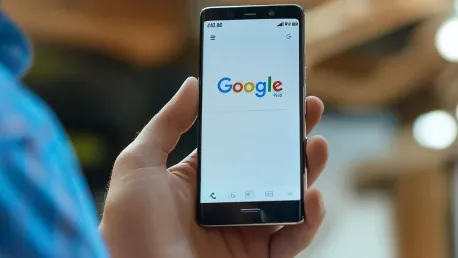Google Voice, introduced in 2009, revolutionized the way people managed their phone communications by offering a free VOIP service and an innovative number-forwarding feature that could be used with any telephone number. Particularly for those who needed to juggle multiple numbers or reviewed phones as part of their profession, Google Voice provided unparalleled convenience and efficiency. Alongside this, Google Fi emerged as a competitive mobile virtual network operator (MVNO) with affordable plans and smooth integration with Google’s suite of products, appealing especially to those within the Pixel ecosystem.
Initial Satisfaction with Google Voice and Google Fi
Initially, the author found great satisfaction in the capabilities offered by Google Voice, such as the ability to send texts and make calls from a laptop or desktop PC long before similar alternatives became available. This functionality was extremely advantageous for anyone needing to handle communication across various devices. Google Fi also received high marks for its cost-effectiveness and efficiency, particularly within urban landscapes, and its impressive international roaming options that were hard to find elsewhere.
One of the key advantages of Google Voice was its provision of text messaging through a dedicated app or the web, allowing users to stay connected without being tethered to one device. This feature resonated well, especially with those involved in professional communications. Concurrently, Google Fi’s seamless integration with other Google products made it a convenient and attractive choice for users deeply invested in the Google ecosystem. However, this initial satisfaction was soon overshadowed by emerging frustrations and complications with both services.
Emergence of Frustration
Over time, the author began facing significant frustration with Google’s services, marked by the glaring absence of Rich Communication Services (RCS) support in Google Voice. This deficiency was particularly jarring given Google’s vocal campaign urging Apple to adopt RCS for enhanced cross-platform communication. The stark contrast between their public stance on RCS and their neglect in updating Google Voice left the author disillusioned and increasingly dissatisfied.
The absence of RCS in Google Voice meant that users were restricted to outdated communication functionalities, creating a substandard user experience. This shortcoming stood in stark contrast to Google’s own promotion of RCS as a superior communication standard, which aimed to enhance communication between iPhone and Android users with improved emoji reactions, group texts, and high-quality multimedia sharing. Despite the success of their campaign influencing Apple, Google’s inability to reflect the same standards in their service highlighted profound issues within their management of communication tools.
Google’s Campaign Against Apple
Google’s intense campaign to persuade Apple to support RCS was positioned as a bid to enhance inter-platform communication. The aim was to enable improved features such as richer emoji reactions, group texting capabilities, and high-quality multimedia sharing. While the campaign achieved partial success, nudging Apple towards adopting RCS, this victory underscored an ironic failure – Google Voice, an established service, remained devoid of RCS support.
The disparity between Google’s public advocacy for RCS and its neglect in implementing the same within its own services exposed critical flaws in their management strategy. While they publicly championed for elevated communication standards, their failure to incorporate those standards in Google Voice eroded their credibility. This glaring inconsistency added to user frustration, revealing a disconnect between their advocacy and internal practices.
Hypocrisy and Neglect
The author’s growing dissatisfaction stemmed largely from what seemed to be blatant hypocrisy in Google’s operations. They criticized Google for their apparent neglect of Google Voice and their failure to implement RCS, despite amplifying public pressure on Apple to adopt this very feature. This issue appeared emblematic of a broader trend where Google would launch promising communication services but fail to sustain and effectively integrate them over time.
Google’s history of introducing, then gradually neglecting or outright abandoning communication services like Google Talk, Google Hangouts, and Google Allo painted a picture of inconsistency in both service evolution and customer support. This pattern contributed to a decline in user trust, with many questioning the longevity and reliability of the services they depended on. The ongoing discontinuation of these services left users uncertain about the future, further eroding confidence in Google’s commitment to its communication platforms.
Complications with Service Porting
The process of porting the Google Voice number to Google Fi encountered numerous obstacles despite Google’s assurances and the existence of an online tool meant to facilitate the process. The failure to achieve a successful porting represented another glaring issue in Google’s service integration efforts. The cumbersome support system, which remained largely ineffective and unresolved for years, highlighted Google’s indifferent attitude towards addressing customer concerns promptly and efficiently.
The recurring difficulties in Google’s customer support and the lacking service integration exposed broader concerns about the company’s capacity to maintain and effectively support its range of services. Users experiencing these challenges felt neglected and underserved, resulting in a substantial loss of trust in Google’s ability to manage its offerings competently. This cycle of unresolved issues and inadequate solutions further compounded user frustration, driving them to seek more reliable alternatives.
Final Decision to Switch to Verizon
Faced with unrelenting frustrations and the urgent need for dependable service during a significant family event, the author ultimately decided to switch to Verizon. The swift and seamless porting of the Google Voice number by Verizon, without any hitches, starkly contrasted with the struggles faced with Google’s services and underscored Google’s inefficiencies in managing its own platforms effectively.
This smooth transition to Verizon amplified the inefficiencies within Google’s system, reinforcing the author’s decision to migrate to a more reliable and integrated service provider. The positive experience with Verizon’s customer support and operational efficiency highlighted the stark differences in service quality, driving home the importance of consistent and effective customer service. This transition served as a testament to the growing dissatisfaction with Google’s services and the compelling reasons for seeking alternative solutions.
Broader Implications for Google Users
Google Voice, introduced in 2009, changed the way people managed their phone communications by providing a free VOIP service and an innovative number-forwarding feature. This service could be linked with any telephone number, offering flexibility, especially for those who had to juggle multiple numbers or reviewed phones as part of their job. Google Voice brought exceptional convenience and efficiency, making it easier to handle various communication needs without the hassle of switching devices or services frequently.
In addition to Google Voice, Google introduced another communication service, Google Fi. Google Fi emerged as a competitive mobile virtual network operator (MVNO) with affordable plans. It seamlessly integrated with Google’s suite of products, making it particularly attractive to individuals within the Pixel ecosystem. Customers using Google Fi benefited from smooth integration with their existing Google accounts and services, enjoying a cohesive and unified user experience.
The combination of Google Voice and Google Fi demonstrated Google’s commitment to innovating communication technologies. Both services offered unique advantages that enhanced users’ ability to manage communications effectively. Whether it was through number forwarding with Google Voice or the comprehensive mobile plans of Google Fi, these services catered to different needs, cementing Google’s position as a key player in the communication landscape.









